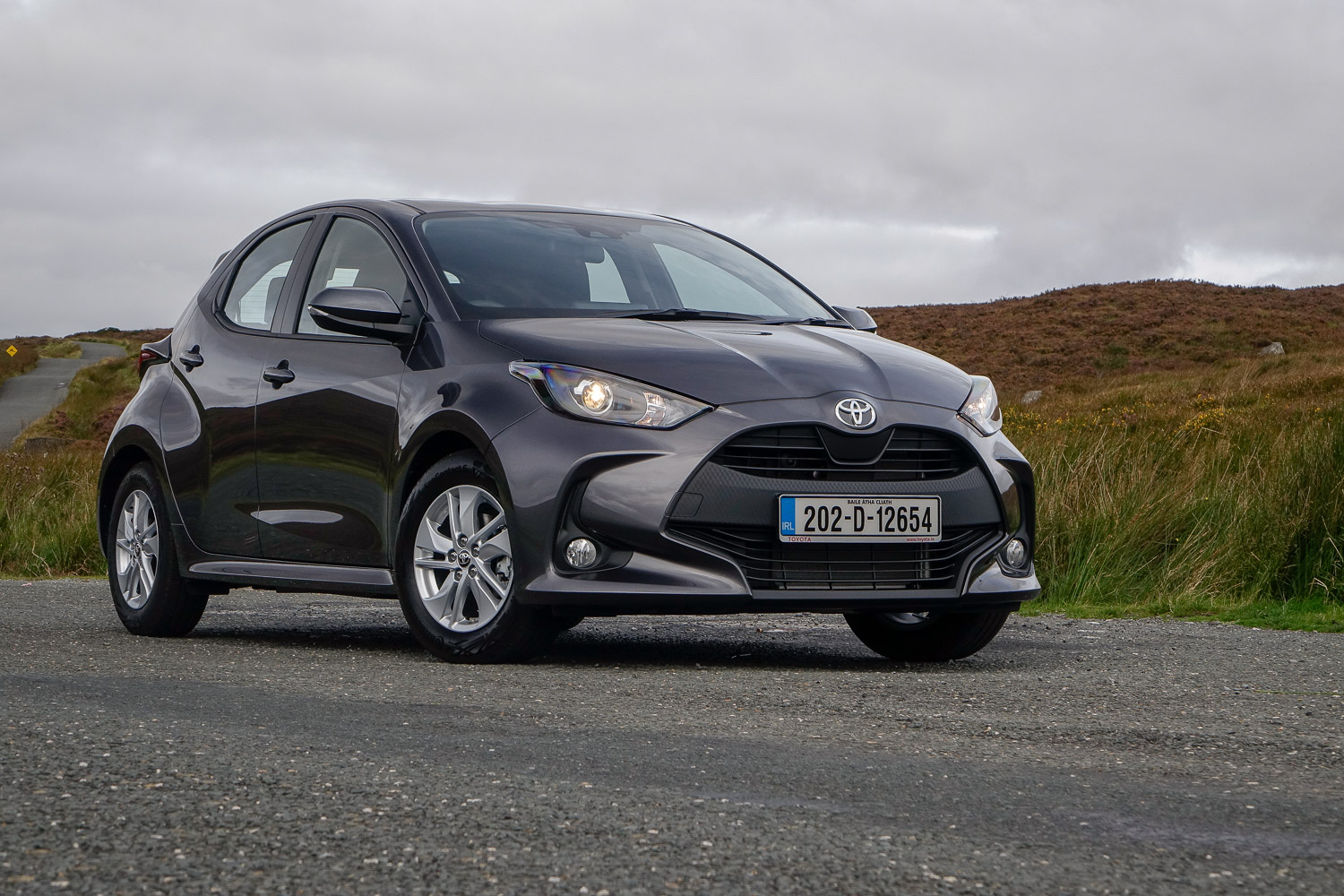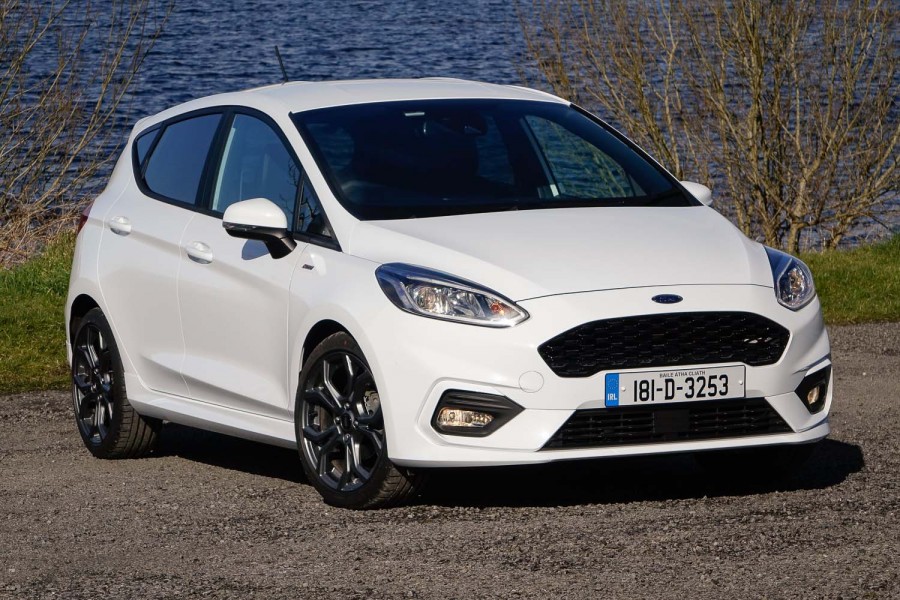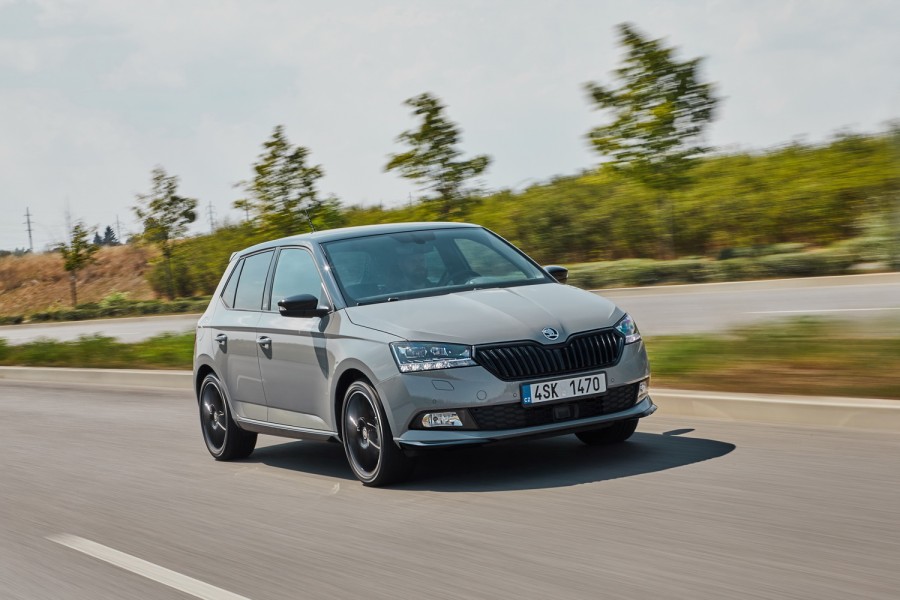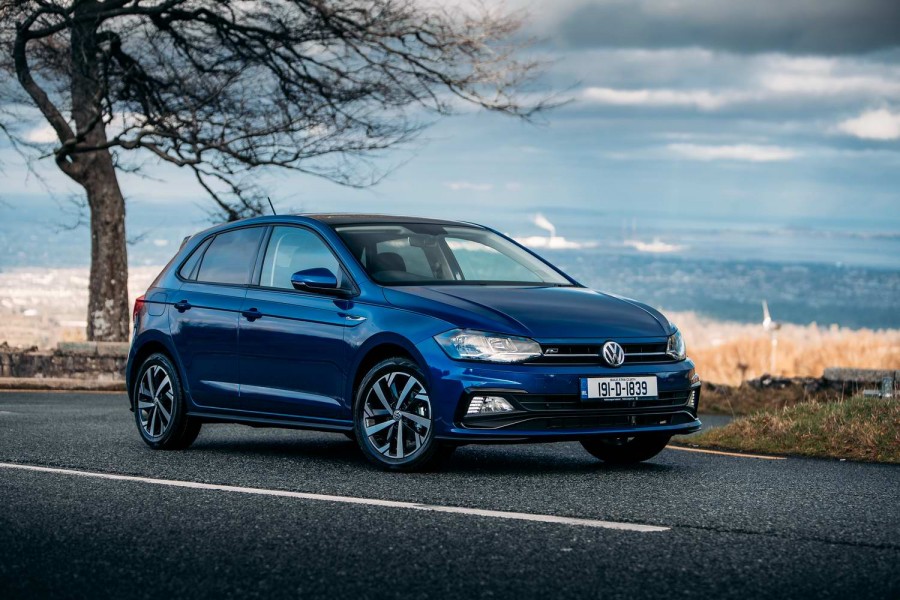This is our first look at the fourth-generation Toyota Yaris, which has just gone on sale in Ireland. And it's an important car for both Toyota and the Irish market, as it has been the best-selling supermini here for quite a few years. Arguably, then, there was little that needed improving. Toyota disagrees, and set about to improve it further, focusing on the fuel economy, safety, spaciousness, usability and performance. Oh, and it made it a lot more interesting to look at in the process.
In the metal
There's a lot to like here, though the grey paintwork and grey interior of our test car do their best to disguise the good work Toyota's designers have done. And actually, pictures don't do justice to the exterior style of the Yaris. Even in modest Luna specification it has presence, thanks to bulging arches front and rear and an aggressively designed 'nose' with wide air intakes, an open grille and sculpted lights. Take a closer look and, don't laugh, but we reckon there's a hint of the Focus RS to the shape of the extremities of the front apron, bonnet shut-line and headlights. On top of that, the black bar you see in the grille is made of a textured material that is oddly pleasing to the touch.
If you're not too distracted by that, you should check out the profiled roof, too. Zagato double-bubble, anyone? From the rear, the Yaris looks distinctly wide and squat. It's not just a clever trick of design (though the snazzy rear light bar helps), as the new Yaris is a massive 50mm wider than before - and 40mm lower as well. Toyota has pushed the wheels out to the corners of the car, too, with a 50mm longer wheelbase, despite a 5mm reduction in overall length. In design terms, it's a world away from all previous generations of the Yaris and it can be made look even more impressive further up the range and with a few choice options.
After the surprise of the exterior, the interior of the Yaris initially looks like a sea of grey, and it is in this model, but look closer and you'll appreciate the clever design that has gone into the cabin. The touchscreen is particularly high up, for instance, so you don't have to take your eyes off the road too far to see it, while there are useful storage shelves everywhere. And, while there's no covered centre console, the glovebox is a decent size. Toyota has used the longer wheelbase and extra width to give front and rear passengers more space, too. Up front, the seats are further apart than before, to give the occupants more elbow space, while the driver's seat is much lower and further back in the chassis, too, bringing them closer to the centre of gravity of the car. Meanwhile, there's a relatively compact and tactile steering wheel to hold with loads of adjustment to it - and to the seat itself.
As is the norm in the supermini class, there's not a whole lot of soft-touch plastic in use, but Toyota has managed to avoid the shiny hard alternative by giving the cabin materials lots of texture instead. In the back, there's above average passenger space, two ISOFIX child seat mounting points and split-folding seat backs. The latter create a step rather than a flat loading area, but it's still a useful feature. In terms of room in the back, there's notably good space for feet under the front seats, even when they're set low down, while headroom and kneeroom are par for the class. There are three seatbelts in the rear, but it's not comfortable for any more than two, really. And watch out for the limited door openings.
Driving it
Although Toyota prioritised fuel economy for the Yaris, it made notable changes to its approach to the development of the car that also promise to bring big gains in terms of how the car drives. Kicking that off is a brand-new platform, which, before anything else is done, lowers the centre of gravity of the Yaris and makes the body itself far stiffer. Now, obviously that will help with the high-performance spinoffs and, no doubt, Toyota's World Rally programme, but Toyota sells a lot more regular variants and so its intention is that everyone will enjoy driving the Yaris, even those that are not driving enthusiasts per se.
The driving position is a good start, as is the nice steering wheel and decent visibility. As in previous iterations of the Yaris, the controls are on the light and effortless end of the spectrum, but there's a modicum more heft than before, helping make the steering feel more alive. It does that without making it any more difficult to park or manoeuvre, and there's a great turning circle, too. The three-cylinder 1.0-litre engine is a bit 'lumpy' on starting up for the first time and can be a little unrefined when moving away from rest, but otherwise it's relatively subdued and it pushes the Yaris (which weighs well under a tonne, incidentally) along with more enthusiasm than you might expect from its 72hp/93Nm outputs.
Even so, it runs out of puff on steep hills and the open road if you expect too much of it, so if you need more performance it's worth considering upgrading to the 1.5-litre unit instead. Still, the 1.0-litre option is perfectly adequate for urban driving and with just a driver on board it doesn't feel out of its depth on the motorway either. We averaged 6.2 litres/100km over a few days of quite mixed driving.
Admittedly, there's a little wind roar at higher speeds, but the suspension feels stable at all times. Over more interesting roads, the wider track of the new Yaris makes itself felt in terms of less body lean and high levels of grip. It's more capable than any buyer will need it to be and always has a surfeit of grip over power, as such. That makes for safe passage no matter who is driving. Speaking of which, the new Yaris has been given a comprehensive active safety upgrade, but we like how it's not intrusive.
What you get for your money
Right now, the new Yaris appears to be available in Aura, Luna and Luna Sport trim levels, with more to come. The standard equipment list is markedly generous, and includes a seven-inch touchscreen infotainment system (at a minimum - it's larger further up the range), Bluetooth telephony, Apple CarPlay and Android Auto compatibility, a USB port, manual air conditioning, one-touch electric windows up front, automatic lights, adaptive cruise control and a host of active safety features that appears to surpass most other cars in the class.
At the time of writing, the starting price is €18,840 for the Yaris Aura 1.0. The Luna is €19,325 and the Luna Sport is €20,890. The 1.5-litre petrol engine is not available in the Aura grade, but it's only €20,515 in the Luna (or €21,900 if you want the CVT automatic gearbox) so it's well worth going for if its higher capacity isn't going to cause you issues with your insurance. Later this year, the new Yaris Hybrid will go on sale, and it promises to be exceptionally economical, if more expensive again than the petrol models detailed here.
Summary
The sales figures suggest that Toyota didn't need to change the Yaris formula too drastically, but even so, it has completely reinvented its supermini, making it far more alluring and youthful, somehow without alienating its loyal following. We expect it to be a roaring success, even as the basic 1.0-litre model.



































